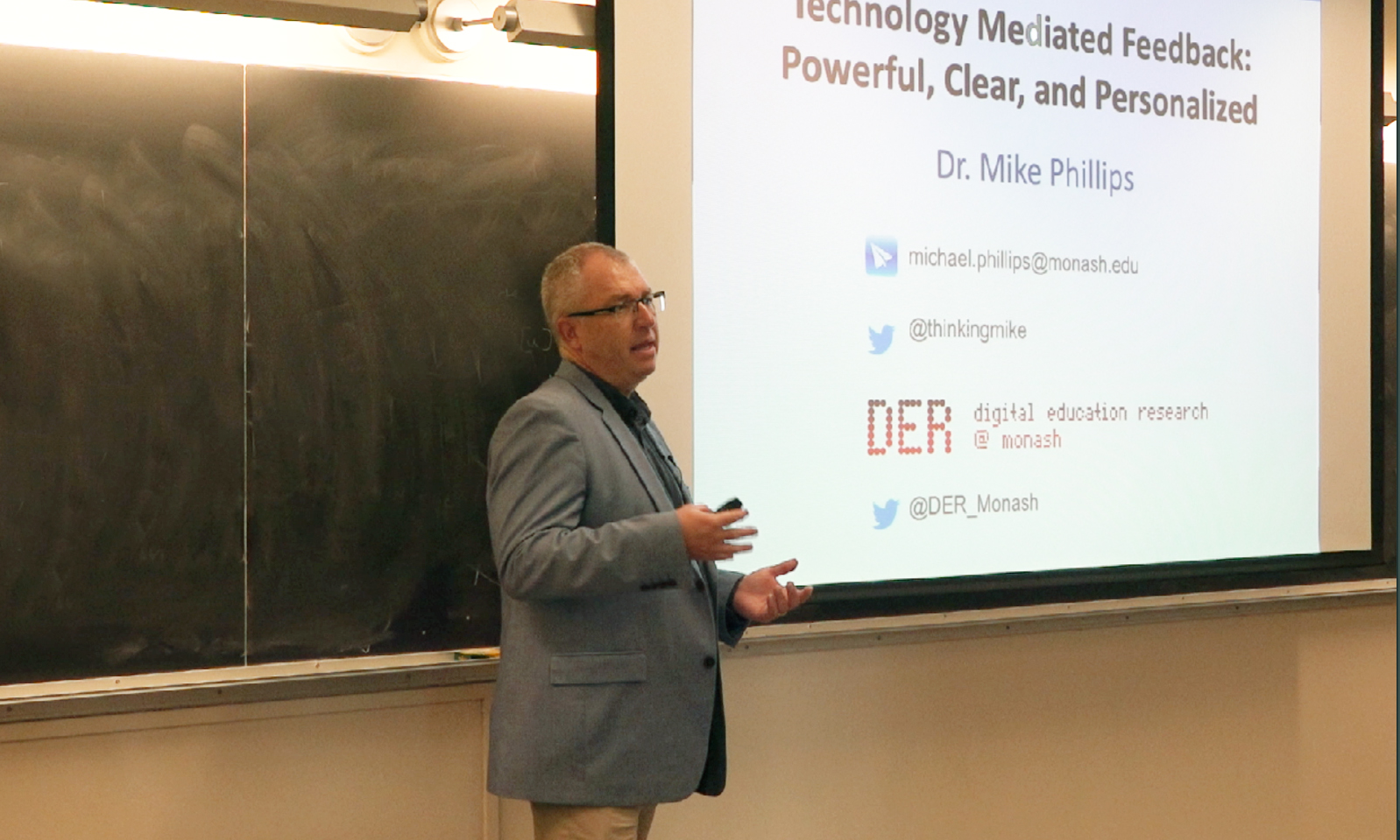
In the classroom, feedback is a vital part of learning.
Both educators and students describe it as important, but it often does not provide the expected results. In a survey of 4514 Australian college students, 15% of student survey respondents reported that feedback was upsetting, and 67% of educators responded that feedback was impersonal because they did not know students well enough to provide meaningful feedback for each and every student. As a result, it is important to define what effective feedback would really entail.
Mike Phillips is a senior lecturer in the Faculty of Education at Australia’s Monash University, and his work focuses on finding new methods of providing effective feedback that learners will actually use, which includes the aforementioned survey of 4514 Australian university students. In his xTalk on October 23rd, Mike Phillips explained this and more, going into detail about this new definition of feedback, and ways to use multi-modal feedback in our digital world today.
Effective feedback, as defined by Phillips and his group at Monash University, is essentially a process that allows learners to make sense of information about their performance and use it to enhance their quality of work or learning strategies. The most important part, however, is that this is a learner-centered process. For instance, if feedback is provided on a student’s essay but the student does not retrieve the essay and review the feedback, the feedback is ineffective as there was no impact and the learner did not receive it. Instead, Phillips suggests a feedback loop model where students receive feedback after the first time they complete a task, and then are re-presented with the task and feedback before a second, related performance. This allows students to build on previous feedback and incorporate it into subsequent performances, creating a cyclical process that is more effective.
Phillips emphasized the importance of frequent, connected feedback that occurs early in the learning process. There are eight principles for effective assessment feedback. Effective feedback should:
- Be timely, and provided to students within a reasonable time frame so that they can utilize the feedback when the material is still fresh in their minds.
- Be clear and specified, as opposed to just a comment such as “good work”.
- Be educative and help correct or strengthen existing skills, but also develop and extend them for the future.
- Be proportionate to goals in terms of time spent, with more time spent on the more important goals.
- Locate student performance in relation to task goals, what students did well or not well, and what students can work on in the future, with more emphasis on this forward-looking feedback.
- Emphasize task performance and the process, as opposed to specific characteristics of the learner.
- Be framed as an ongoing dialogue and a way to start the conversation with the educator as opposed to the end of the process.
- Be tailored to students, taking each student’s background and context into account.
The two most common forms of feedback are written feedback (such as written or typed comments on an essay), and face-to-face discussions. Written feedback faces the hurdle of ambiguity, as students often report not being able to read the instructor’s handwriting; face-to-face discussions can suffer from impracticality in the classroom, dependence on student memory of the feedback, and performance anxiety that results from a professor talking to a student (i.e. students may become nervous about an authority figure talking to them one-on-one).
A new form of feedback, that doesn’t necessarily resolve all these problems but which provides a new way of feedback, is digital multimodal feedback. This includes audio, video, and screencasts. Video feedback is often perceived as being more individualized, with students reporting feeling a stronger connection to their instructor. In addition, video feedback can be clearer because there are more audiovisual cues provided than a written comment. The video feedback process as described by Phillips involves instructors recording a feedback video right after reading the assignment, all in one take and with no strict script in order to make it as natural as possible. Following video feedback, students reported having a clearer understanding of how to approach their assignment, and instructors perceived an improvement in quality of work for students who used the comments as well. In the survey with 4515 Australian college students, a greater proportion of survey respondents agreed that multiple modes of feedback are usually more effective than a single mode of feedback, and even more so if one of those modes is digital (as opposed to having multiple modes of feedback without digital).
Though digital multimodal feedback is not a “magic bullet” by any means, it certainly provides a new form of providing effective feedback to students. It is important to note that modality is not the only factor causing these positive results, and it is not a one-size-fits-all solution applicable to all cases, but it provides a new way of thinking about feedback that is more student-centered and impactful than traditional forms of assessment feedback in schools.